The path to the Tomb of Dracula was long and convoluted. Vampires had been around for a long time. They peppered stories in the Golden Age but they were basically one-shots who got re-killed at the end of the story. But vampires plagued a great many superheroes including The Shield, Mr Justice, and Batman, among others.
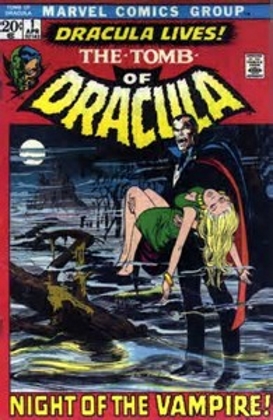
Dracula carried so many unconscious gorgeous women he should have reminded us nice guys finish last and they get no credit for it…
Enter the Dark Ages and the Comics Code Authority, and exit vampires, werewolves, and zombies. They were all banned. Even the word “zombie” itself was banned.
You could pretend to be the Devil, though. Superman did that in the fifties to fool Lois Lane. I don’t get what those two were doing. Suddenly that scene in the tub seems almost tame.
But the Comics Code cleaned comics of any social comment, any monsters, sex, and anything sexual including nipples, packages in men’s skin-tight pants, nudity, nipples, chest hair, and, oh, yeah, vampires. They were protecting the morals of children, who in their stunted political opinion would be the only people to ever read comic books.
It was under the code that the greatest vampire of all time was created. In fact, Kirby twice made a vampire with a horned helmet. The second time, when the code wasn’t a problem, was Mantis the Energy Vampire of Apokolips.
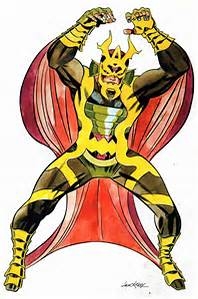
Electro drains electricity and plays lousy tunes, neither makes him a vampire: Mantis suffers the same problem.
In the early sixties, when the code was a problem, he made the planet-eating vampire, Galactus. Because Galactus sucked living energies and had no sexual component to his stories, he was allowed through.

Galactus sucks the life out of planets: (1) This does not make him a force of nature, just a really big vampire (2) Even if he is a force of nature he has sentience and so can be judged good or evil.
In 1971 the code was significantly loosened. Characters from literature could be published in comics. This allowed several cheap B grade movie characters to enter comics. That is, comics could exploit the public domain the way Hollywood had for decades.
More generally, vampires could be characters again. In that same year, Marvel published its first Morbius the Living Vampire story (in The Amazing Spider-Man 101). He was not really a vampire (code-wise), they were seeing how far they could push the boundaries. DC at the same time was demanding changes to the code in the name of the artistic freedom of their writers and artists.
And it was this rewriting of the code as much as anything else that changed the Silver Age into the Bronze Age. The change not only loosened the rules, it loosened the grip of the Comics Code. After all, they could not say why vampires were anathema before, and all right now. They just re-wrote the code, they did not say the market had changed or society had changed.
So companies began to publish without the code (Gold Key and Dell never submitted to it), DC demanded (and got) changes, Marvel defied the code, and the new independents went with the Gold Key model. It all reinforced a continuing shift to the direct market and comic book specialists. The old distributors, who would not distribute comics that didn’t submit to the code, were shut out.
So it was that back room politics ushered in a more open comic book market with almost immediate effect.
In 1972 the first ongoing series with a vampire lead who looked like a vampire was published. That was also the year of the Watergate break-in. See what happens when you weaken the censor? The Comics Code was there to protect children from immorality.
Vampires have a long history. The ancient Greeks and the Germanic tribes were the two sources that influenced Western literature to this day.
In Germanic tales they were called draugr, which means liar. They were ruddy colored and bloated. Ancient Greco-Roman stories included Empusa, who transformed into a beautiful woman, seduced a young man, and sucked his blood when he slept. There were also the striges; monsters with beaks, wings, and four legs who sucked the blood and ate the entrails of their victims, particularly infants.
In the nineteenth century, classicism (the British Empire was the heir to Greece and Rome) and Romanticism (Germanic tribes are cool) clashed.
Third fluid in the mix was an outbreak of vampirism in Eastern Europe in the eighteenth century. People reported vampires, fought vampires, were bitten by vampires. Government officials went out, did interviews, dug up bodies, did autopsies, and stabbed corpses with stakes. Of course, modern science explains the whole thing as superstitious villagers. Superstition has not been used to explain the Trump vote, yet, but go ahead, hold your breath, it won’t be that long in coming.
There was also a nineteenth-century outbreak of vampirism in New England. Historians blame that one on immigrants.
But the outbreaks made vampires a thing in Britain. So when the year without a winter came along, 1819, four people got together and to pass the cold time they wrote stories. Frankenstein came out of this, with its giant Mongol monster (look it up) and John Polidori’s novella, The Vampyre.
The vampire in this story is Lord Ruthven, a member of the elite. He is urban, not rural, urbane, not rustic. He doesn’t represent inadequate rural people rather, he symbolizes a decay of the elite.
It was this mix of lifebloods that gave rise to an Irishman writing a novel which has survived by its ideas, not its writing skill. Bram Stoker wrote Dracula influenced by all the things we’ve looked at and more. However, there is no evidence I can find, nor pattern I can discern, which indicates he was a member of the Hermetic Order of the Golden Dawn.
Stoker, like Polidori, wrote of a vampire who is part of royalty, urbane, quite pale, and not the protagonist. Both vampires prefer to suck blood from women, and both add a stronger sexual element to vampirism. They have to drink copious amounts of blood compared to previous vampires, who often take a more romantic turn and drink only a few drops of blood every few months.
But Stoker’s pale, noble, horny, homicidal maniac vampire was based late in the piece of Vlad Dracul, a Walachian who defended Transylvania from Ottoman invasion. He staked a lot of people, meaning he punctured them with round stakes (sharp ones hurt less). He was captured by the Ottoman Turks and put into a dungeon where he used bread crumbs to bait small birds, catch them, and suck the blood out of them. He was a member of a secret order of knights whose symbol was a dragon and from which the name Dracula is derived. Oddly enough that hasn’t become part of the secret order rubric of modern conspiracy theoriests. And when his tomb was opened in the seventies it was empty (I first heard that on the radio: it made my day.)
Stoker’s original idea was to call the character “Count Wampyr,” which recalls “Varney the Vampire” in the penny dreadfuls.
It was the Polodori-Stoker version of vampires that became the standard. Though Polidori’s version had immediate success, Stoker’s version did not become a classic until 1922 when the movie Nosferatu was made. Dracula has found its best venue: movies. Until comics.
Tomb of Dracula came out with the cover date of April 1972. Writing credit was to Gerry Conway but it’s more complicated than that. Art was by Gene Colan for the whole run. They took the best known vampire in fiction and put him in as the villain of his own comic.
It’s said they considered other in public domain vampires, but I don’t see how that works. Who’s the second most famous vampire? And taking Dracula fits what Stan Lee often did – take bits from a company that can’t defend itself. The name Daredevil is the commonly mentioned example. Somehow on anybody else this is called tribute or keeping someone else’s idea alive, but in Stan Lee’s hands…
The story begins with Dracula dead, a skeleton in his own coffin with a stake through where his heart used to be. Basically, this is where the novel ended, except in the novel he’s stabbed on his way back to the castle by Jonathan Harker and Quincey Morris, a Texan character who has totally been forgotten.

I’ve had it with these **********ing vampires on this **********ing train!
Yeah, but you remember it, don’t you?
Dracula was originally meant to have been lying there since the end of the novel, Dracula. The problem with that is it meant the character was out of action for nearly a century. Writers soon realized, this would leave him a little out of touch with the modern world. Captain America had already marveled at the existence of television, they didn’t need Dracula to do the same thing.
After eighty years, none of Dracula’s mortal opponents could remain viable physical opponents. But they left enough descendant doppelgangers to populate the hero side. There is Dracula’s own descendant, Frank Drake, who explains early his original family name was Dracula. He explains this to Rachel van Helsing, granddaughter to the original van Helsing who was not Hugh Jackman.
Joining them is Quincy Harker, the son of Jonathan and Mina Harker, who opposed Dracula in the novel. He is named after Quincey Morris. He is the last character introduced in the book, where he is a small child hearing the story. In the comic he is old and stuck in a wheelchair.
Professor Xavier, meet Quincy Harker. Quincy Harker, meet Niles Caulder. Niles Caulder, please complete the loop.
When Tomb of Dracula started out it changed direction every issue. It began something like Universal films, turned into Hammer films, then Drake and van Helsing became romantically involved (mutually), and writers changed as often as the tone and subplots of the book. Fortunately, after a half-dozen issues or so, Marv Wolfman came in.
He eventually hit on the formula that worked. Basically he changed Dracula. In the novel, Dracula’s main effort is to have Lucy and then Mina. He kills Lucy, and to save Mina, Jonathan puts a Eucharist on her head which burns and scars her for life or at least until League of Extraordinary Gentlemen, where it seems to have disappeared.
Indeed, in his castle in Transilvania, Dracula had three females. Often called the Brides of Dracula their correct name is the Weird Sisters (Like the singing group in Harry Potter).
This sexual element, the insanity of Renquist, and the lady-in-white insipid insanity of Lucy caused many people to label Dracula a Gothic novel.
Wolfman wouldn’t have this. His Dracula enjoys women, but he’s more of a serial killer. Sure, he carried a lot of unconscious women on his covers, but stalking and killing them was never the engine of Wolfman’s stories.
Wolfman modernized Dracula in a way that is often unnoticed but almost universally imitated. The idea of Dracula spending large quantities of his plot on sexual pursuit is gone. The horror elements of the Gothic novel can remain – Wolfman played them up. But there is a new motivation.
Dracula wants power like a modern dictator and more.
Simply put, Dracula’s overriding motivation is to seize power and rule the world. Initially he thinks he will simply turn all humans into vampires who will obey his will. It’s almost as if he has the Marvel version of the anti-life equation. Or like Dr .Doom’s one successful attempt to conquer the world, he can force everyone’s brain to agree that he’s the ruler.
But in the end, Dracula himself gives up this plan for the simplest of reasons: a world of vampires would have nothing to feed on.
So Dracula must follow more regulation secret-conquest plans. But instead of him trying to put his plans into force, he is shown again and again dealing with the forces and people who try to stop him or even get there ahead of him.
So he battles the Van Helsing-Drake-centered team of vampire hunters. He battles Deacon Frost, a vampire who wishes to take over as lord of the vampires, Varnae (based on penny dreadful character, Varney the Vampire) was the first vampire and first lord of the vampires who died and was resurrected, so he wanted his old job back.
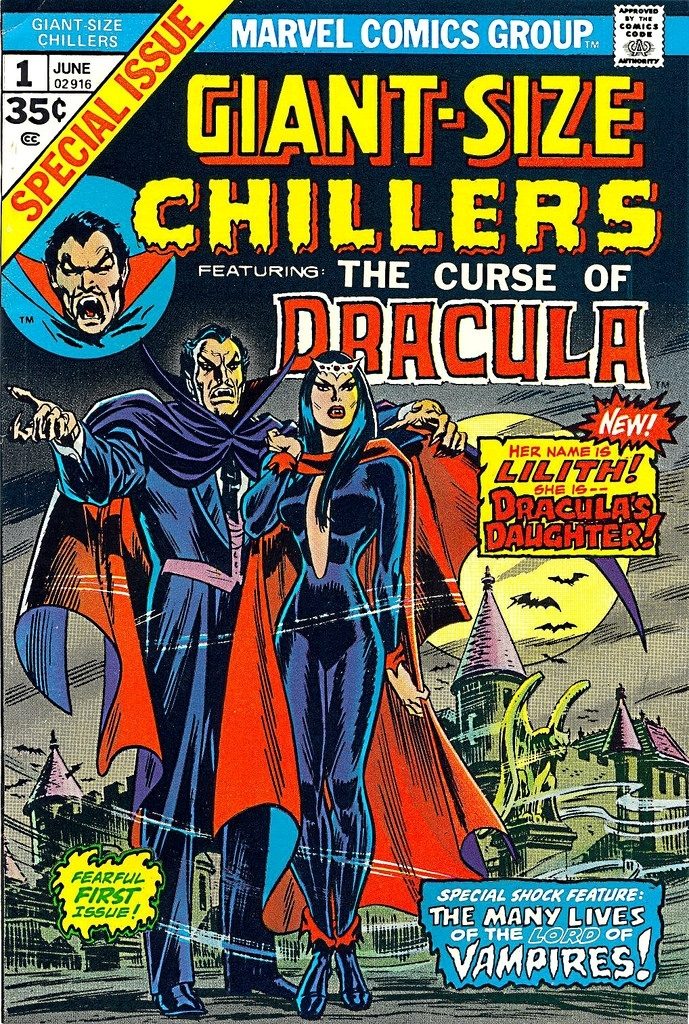
But Lilith and Satana never got together as the core of a legion of female monsters – for some reason.
He also has on-again off-again battles with his daughter and his son, each of whom had their own agenda.
Then there’s Blade, whose mother was bitten by a vampire while pregnant with him. This gives him the powers of a vampire but not the weaknesses. I don’t know how it gives him immunity to blood loss, it certainly didn’t give him immunity to paying taxes. In the same box is Hannibal King, who is introduced over a whole issue, revealing he is a vampire at the very end. He hates being a vampire and with supreme will refused to take living blood from humans and he hates Dracula and Deacon Frost both.
At one point (Tomb of Dracula #22), Dracula faces Gorna, Lord of the Living Lightning. This is a vampire who ignores Dracula’s order. Dracula sets him on fire and thinks that’s it. But the vampire comes back, able to throw something like lightning bolts. Dracula loses his temper and throws the vampire into a fire. But as he does so, Dracula says he is the vampire’s god and he is an angry god.
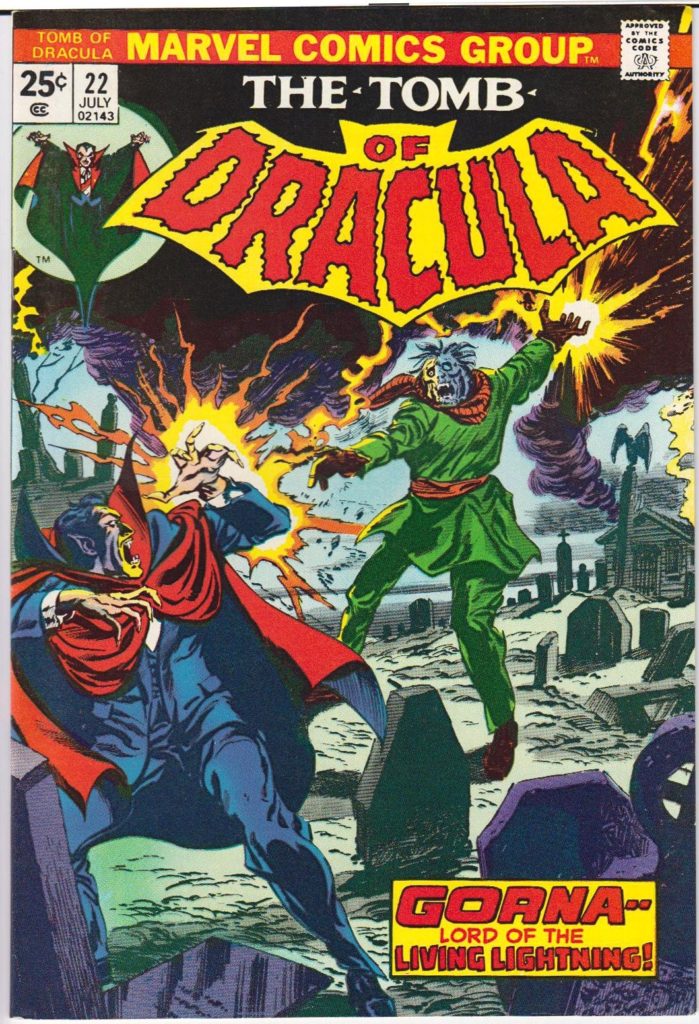
If this is what happens when you set vampires on fire, why doesn’t Dracula burn himself and get extra powers?
Gave away a fair bit there, didn’t he? This is the core of Dracula’s ambition. He wants to be a god, and of all people, maybe he can make it.
But perhaps Dracula’s chief rival is Dr. Sun, a Chinese criminal whose brain was put into a robot body. Kind of like The Brain from the Doom Patrol or more properly Arnim Zola (comics, not movies).
At one point, one of Dr. Sun’s minions castigates his fellows who are also about to die so are running away. He says their lives do not matter and they must give Dr. Sun time to escape. Dracula says he hopes the man will be as loyal to his new master as he was to his old. Then Dracula bites him and makes him a vampire.
This being Marvel, Dracula had many crossovers, like Dr. Doom, Baron Mordo, the Silver Surfer, Werewolf by Night, Apocalypse, Wolverine, The Defenders, and others – OK, including Howard the Duck. I don’t know if these crossovers (minus Howard) really worked.
What did work, what made Dracula’s unboundried ambition work, was a defining matter of the Bronze Age. People died. Not just the usual nameless cute female but named characters. A kind of Gwen Stacy thing but no one gets upset about it because it happened so often.
Dracula’s stories have life-and-death stakes. Overall, despite a bad start, the Tomb of Dracula changed the nature of vampire literature until everything else had to shift around it. Other titles did come out.
Atlas had a title, Planet of Vampires, where apartment-dwelling Moribus-types victimized people who lived on the streets. That lasted 3 issues. The same short-lived company did their own version of Dracula, who was made a vampire by Satan so he could torture humanity. They also did Son of Dracula. Son of Dracula lasted one issue.
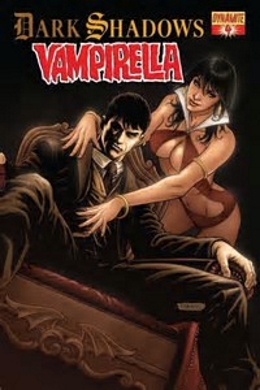
Vampirella and Barnabas Collins, but she faced Dracula, too.
And she’s beginning a new series in Dynamite comics.
There are Vampirella and Barnabas Collins. They both hate being vampires, so they live with a disability. Dracula loves being a vampire. This is now the norm and people who change from that.
Other vampires, whether I…Vampire, the many vampires in various covens in lots of movies and games, American Vampire, Underworld (all of them), react to Dracula. Bennett, in I…Vampire, is actually against the Dracula-type vampires who want to conquer, like Mary Queen of Blood. My own Slums of Paradise, has waves of vampires as barbarians bringing down human civilization in a new fall of of a corrupt Rome, which it turns out was Dracula’s plan in the comics before he shifted course.
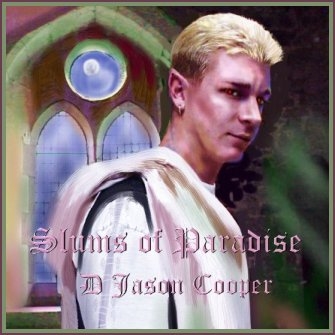
OK, I’ve been interested in vampires for a while.
Also the fall of Rome. Didn’t think I’d have to relive either.
All vampires exist in reaction to Dracula, not the Dracula of the novel, but the one from Marvel.

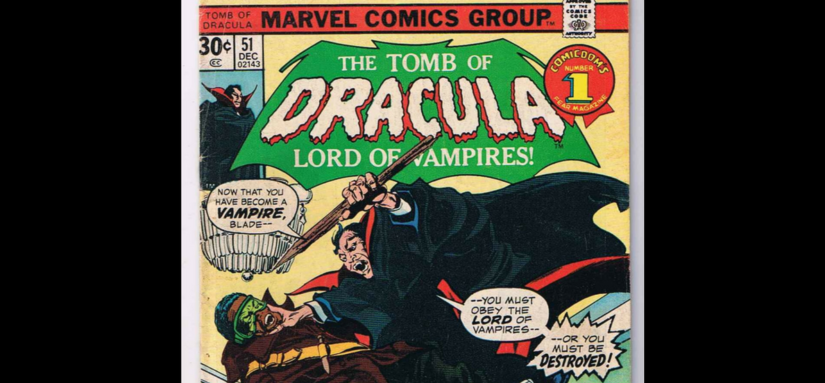
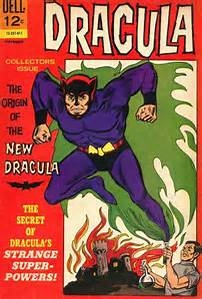
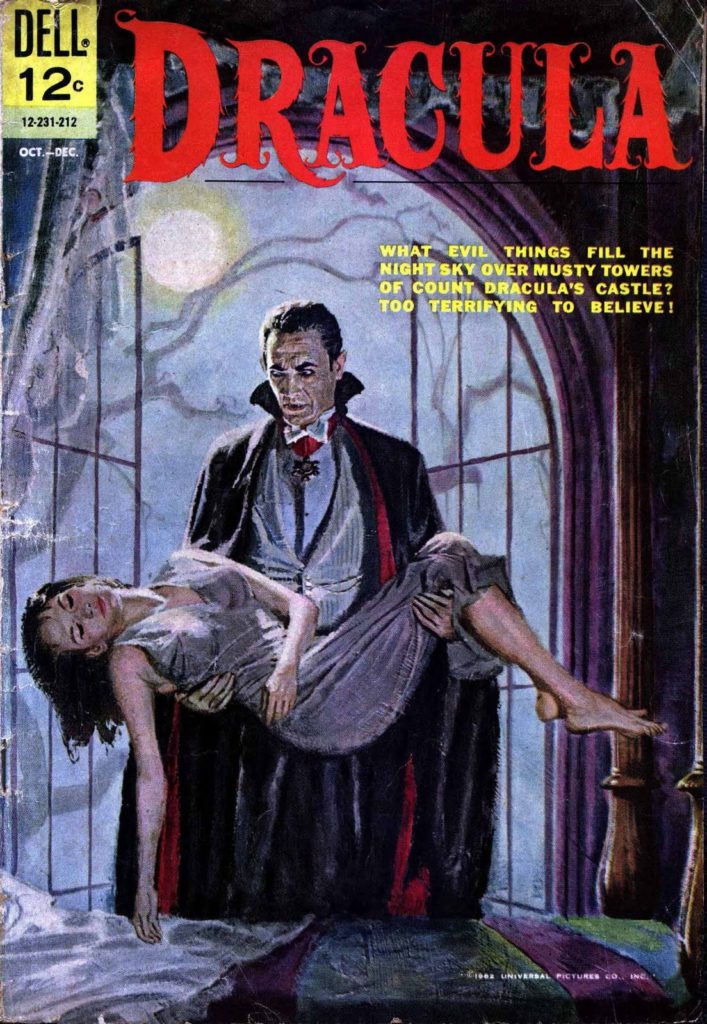

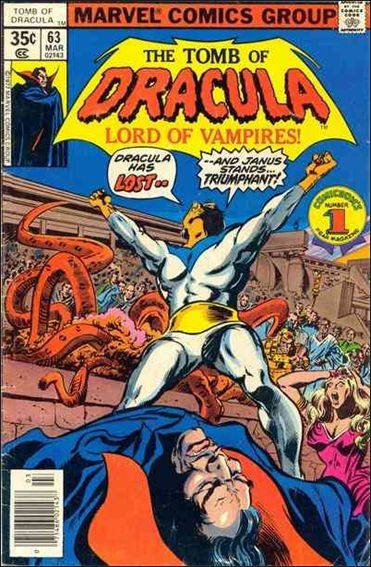
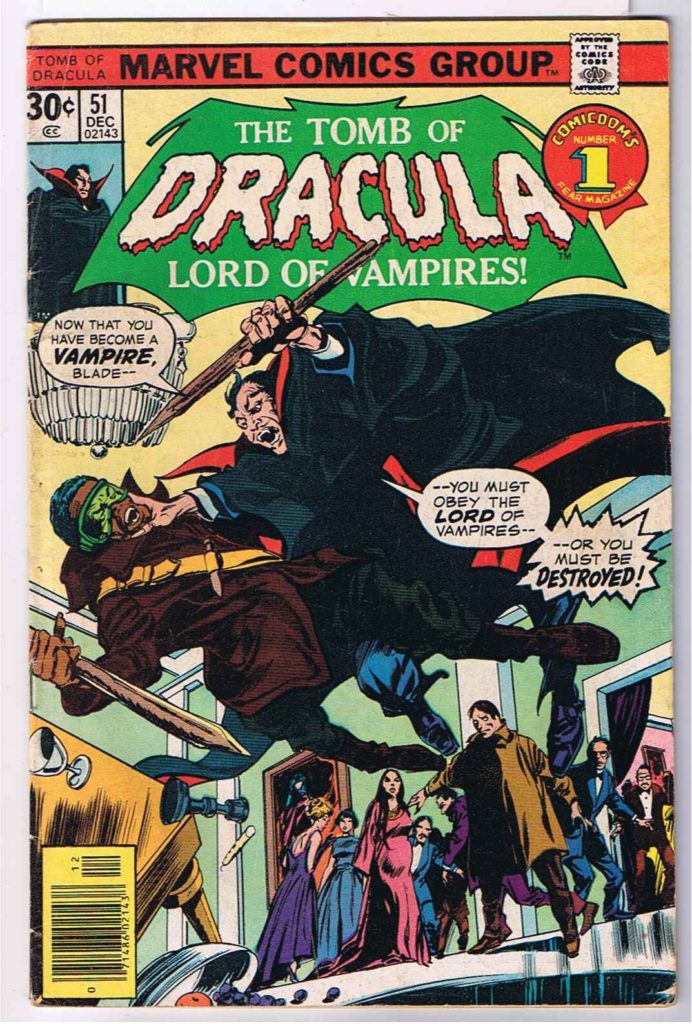
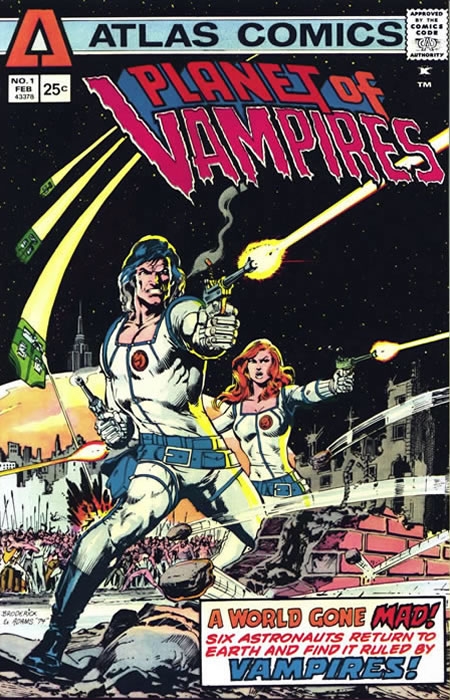
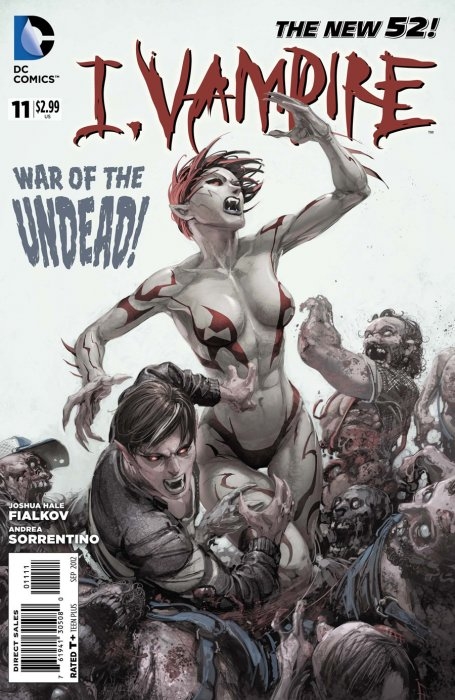
Comments are closed.